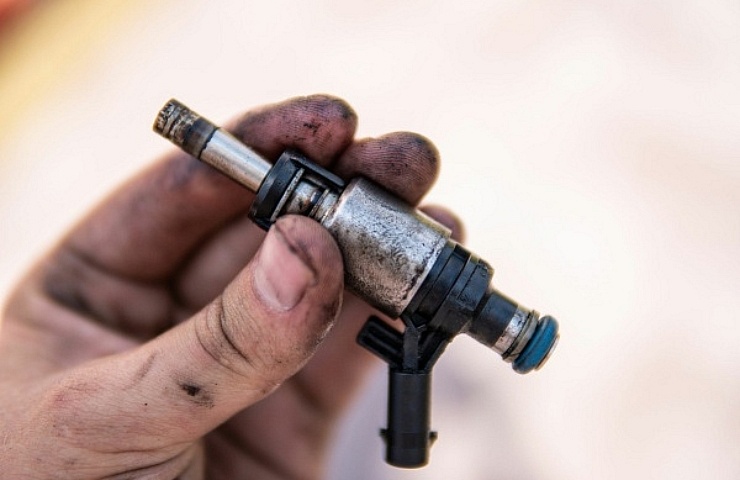Contents
Fuel injectors—whether port-injected or direct-injected—are designed to maximize the atomization of the fuel so that the particles are as small as possible, like a fine mist. That helps ensure complete combustion for max performance and efficiency.
Clean Injectors Improve Performance
Cleaning injectors absolutely improves performance. As the injectors get dirty, they can’t spray the fuel as they should. The spray pattern is sometimes altered, like putting your thumb over a water hose. If the spray is obstructed, it can shift toward the intake wall instead of being centered. If the fuel spray hits a surface, it is no longer atomized and won’t burn correctly.

Fuel injectors take pressurized fuel from the fuel rail and inject it into the engine as directed by the ECM. If they are dirty, they don’t work very well.
Eventually, the injector will clog to the point that it doesn’t spray at all, leaving you on the side of the road. Cleaning the injectors regularly reduces the potential for clogs. If you are experiencing a loss of performance, a cleaning can restore it. Clean fuel injectors also make the engine more efficient, improving fuel economy.
Shop now for fuel injector cleanerClogged fuel injectors lead to lean conditions in the combustion chamber, which is dangerous for your engine. Lean means that there is not enough fuel to burn.
The chamber gets hotter than normal because the fuel is not there to help cool it. Lean air/fuel ratios can lead to detonation, which is when fuel auto-ignites from a hot spot in the chamber. This is a misfire, as the fuel burns before the engine is ready. Misfires can break pistons and rings and damage the engine block and heads.
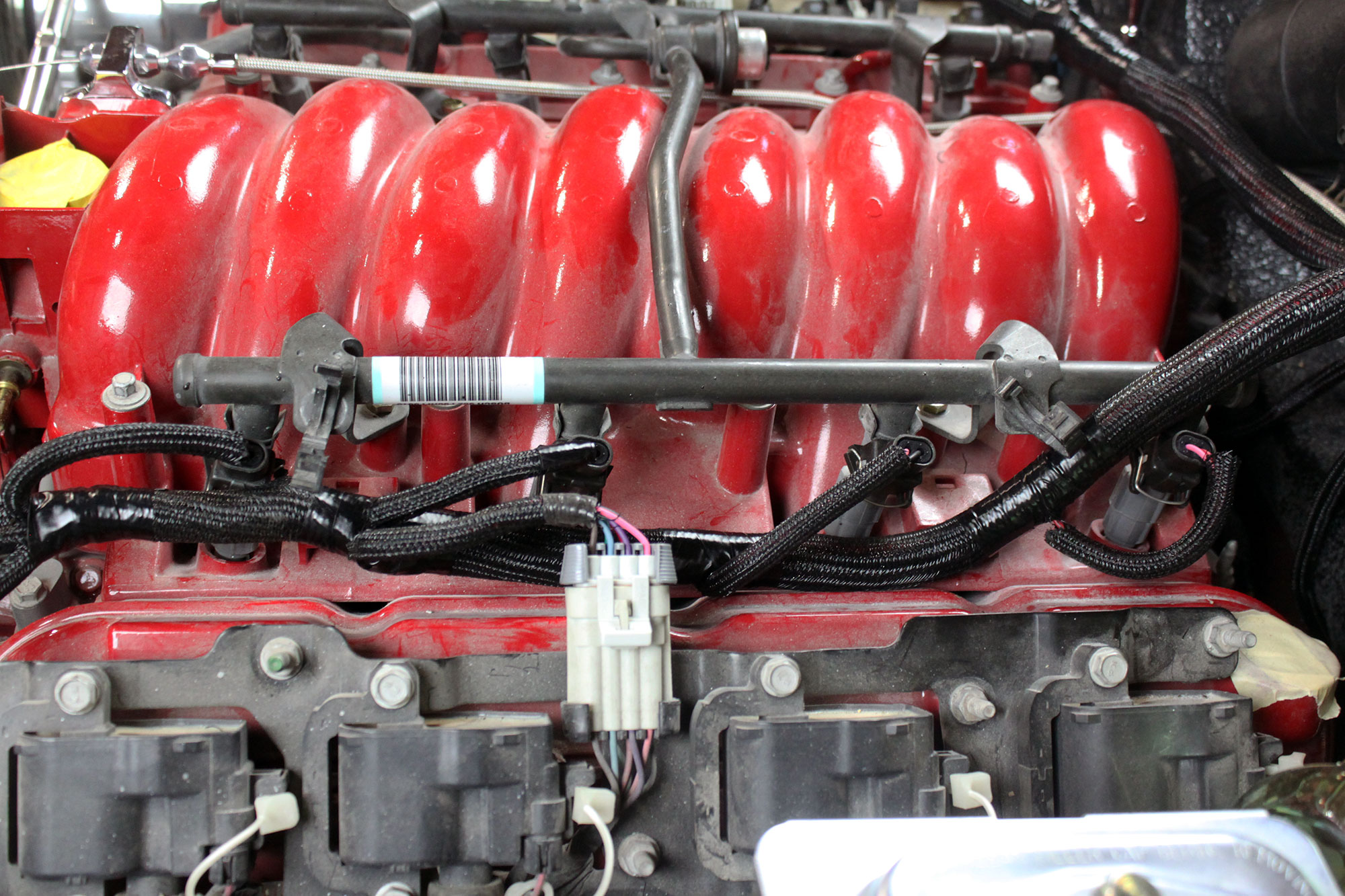
This is an LS engine fuel rail with injectors installed. This is similar to almost all EFI port-injected engines.
Symptoms of Dirty Fuel Injectors
Like many other problems, the signs of dirty injectors are often ambiguous. However, clogged fuel injectors are a very common issue and relatively easy to remedy.
Surging or hesitating – When your fuel injectors are dirty, the engine can’t make power, so that it may hesitate on acceleration or surge at idle. This is because the fuel is not spraying out in the correct pattern. It could be dripping into the chamber or spraying erratically.
Stalling – If the clogs are heavy and affect more than one injector, your engine could stall at idle and not rev much at all.
Check engine light – If there are misfires, detonation, or lean conditions, the engine control module (ECM) will set a code and light the check engine light. The codes are typically pinpointed to the sensor that is out of range and doesn’t usually say, “injectors are dirty.” Instead, they say things such as “Bank 1 Lean” or “Bank 2 Oxygen Sensor 1 Lean,” which could represent clogged fuel injectors.
Read: Interpreting Engine Codes Is Easy With Right OBD Reader
Hard or no start – Once the injectors cannot flow enough fuel, the engine will not start. If you experience a no-start or hard start and catch a whiff of that “out of gas” smell, you may have an injector issue.
Cleaning Options
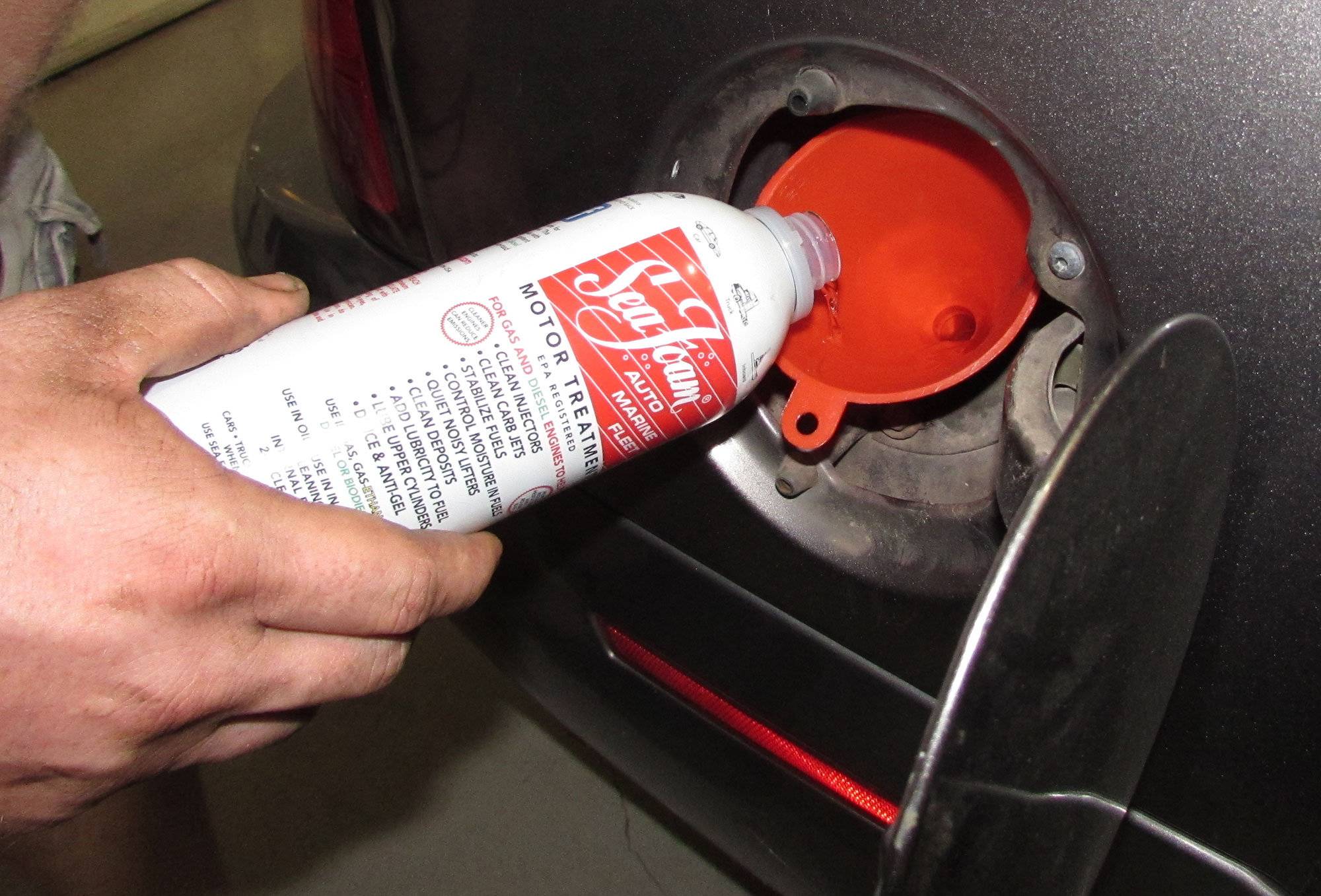
In-tank additives are the fastest, easiest way to clean your fuel injectors and fuel system. When done regularly, this works quite well.
There are several ways to clean your fuel injectors yourself. Fuel tank additives work quite well, even for severely dirty injectors, as long as the engine can run. There are consumer additives and professional-grade cleaners available, too. These additives go into your fuel tank, and you drive the car to clean the injectors. Moderate to severely dirty injectors may require more than one treatment to get the engine back to full flow.
Shop now for fuel injector cleaner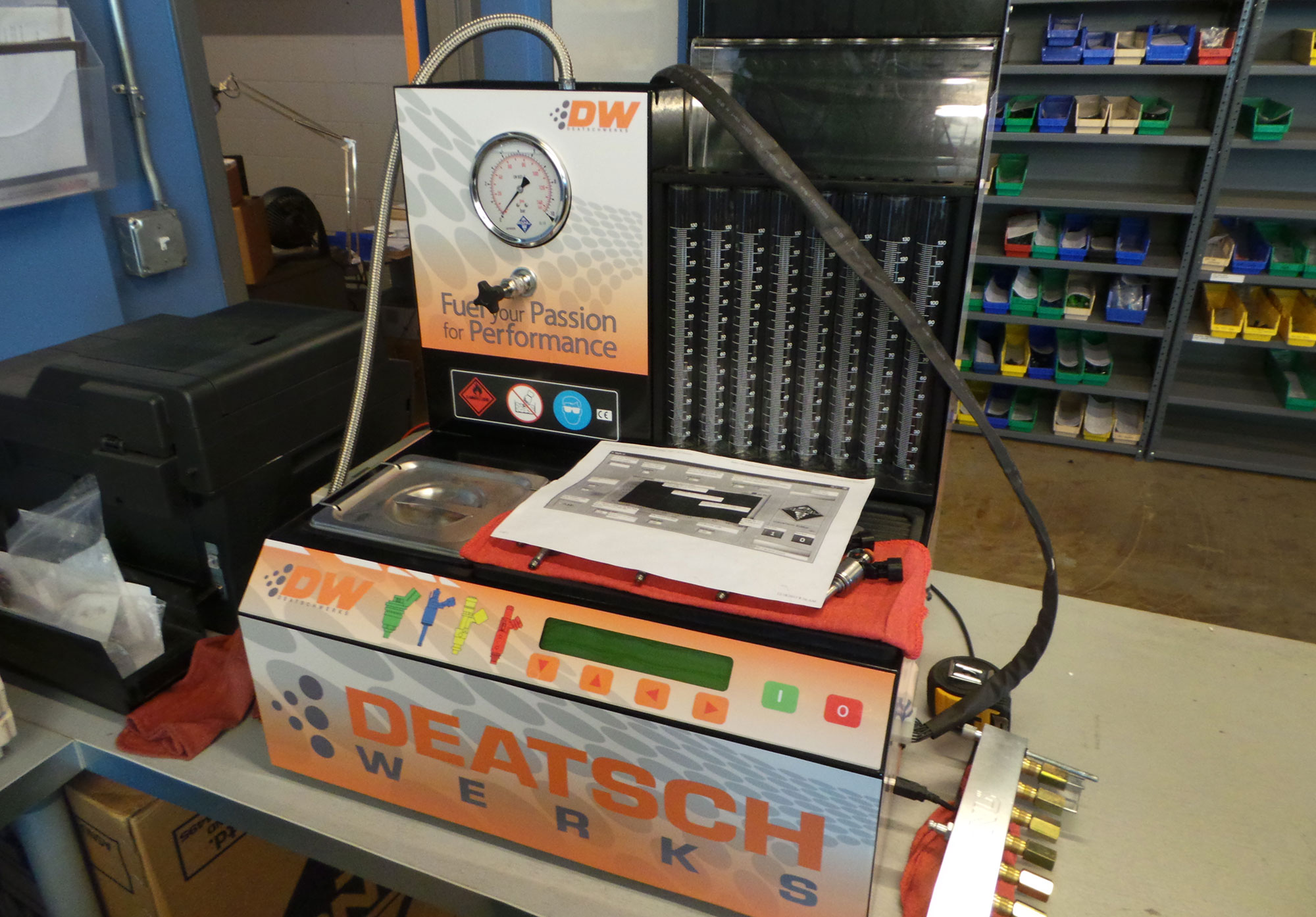
When injectors are very clogged, they can be cleaned and tested on a professional machine like this.
The solutions become more drastic if the injectors are dirty or fully clogged. Professional cleaning can restore the injectors to like-new condition. This process involves disconnecting the fuel lines and connecting an engine-specific adapter to the fuel system, which allows the cleaner to be directly injected into the engine’s fuel rail. This is the most efficient method. Kits can be purchased on eBay. Service shops charge $75 to $150 to perform this service.
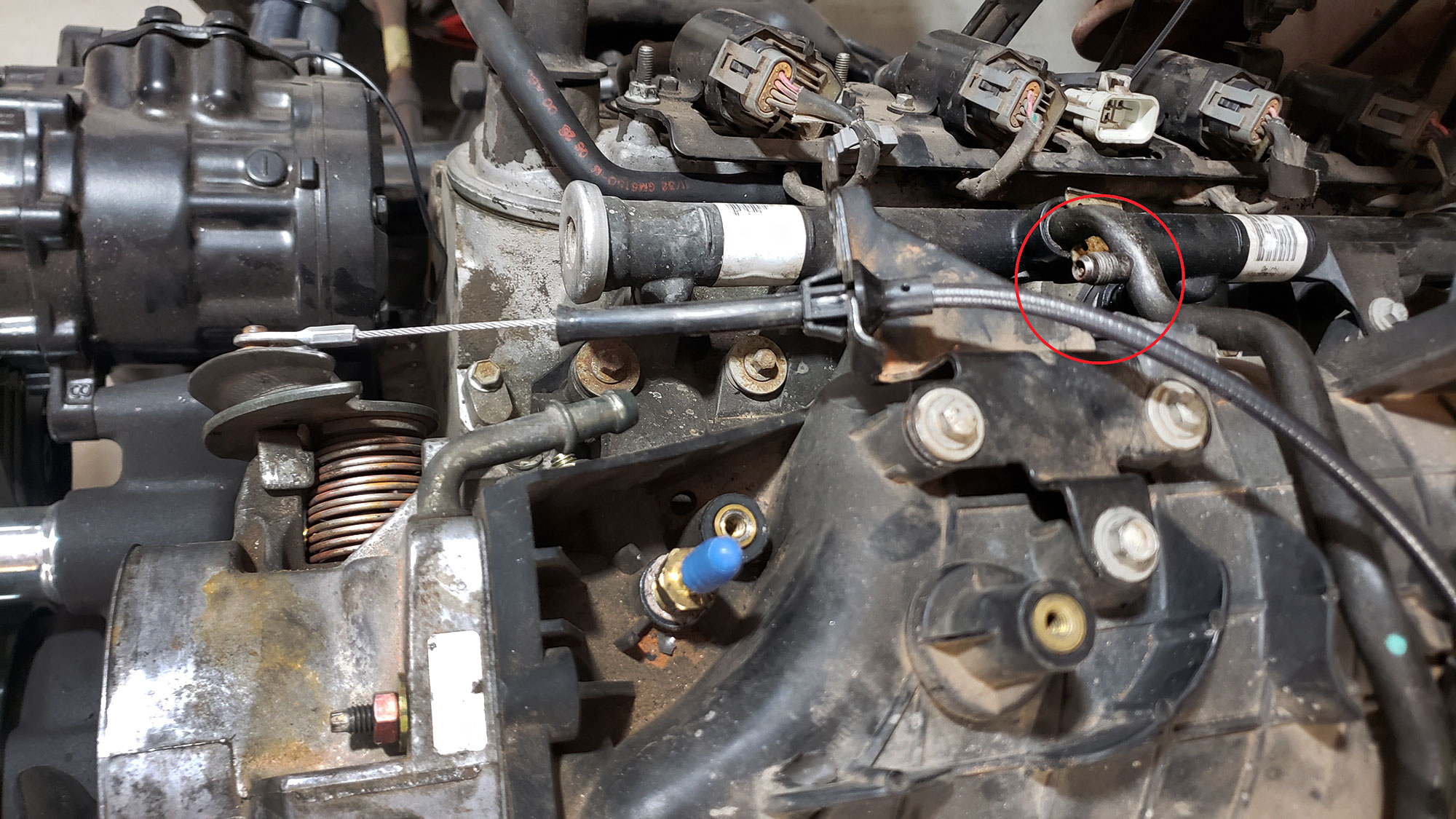
You can also use a pressurized cleaning system that uses compressed air to inject large amounts of specialized cleaner into the fuel rail for immediate results. The system connects to the service port shown in red or with a T-adapter in the fuel line.
You can also pull the injectors and clean them with an ultrasonic cleaner. This works, but if you are going through the hassle of removing the injectors, you could go the whole way and have them cleaned professionally in a proper ultrasonic fuel injector cleaning machine. These machines also test the injectors as they are cleaned to ensure they operate properly and within spec.
The in-tank additive is enough for most owners to get their engine back in working order. Instructions vary by the chemical you use to clean your injectors, with the more aggressive cleaners requiring a few more steps than just “pour and drive.”
You can add an injector cleaner to your fuel tank with every oil change to ensure the fuel system stays clean. Here’s how:
- Start with a near-empty fuel tank, about a quarter tank.
- If you are having injector issues, we recommend changing the fuel filter before adding fuel injector cleaner for the first time.
- Start the engine and bring it up to operating temperature.
- Open the fuel tank and pour in the recommended amount of cleaner. Some require using an entire bottle; some only need a few ounces. It just depends on the brand.
- Follow the directions on the bottle for the cleaning. Most cleaners recommend driving for a minimum distance.
- Fill the fuel tank with fresh fuel.
Your engine’s fuel injectors are a critical component. Ensuring they are clean and well-maintained helps your engine last as long as possible without significant service issues. Adding an injector cleaner to your tank with every oil change is good maintenance for all fuel-injected vehicles.

